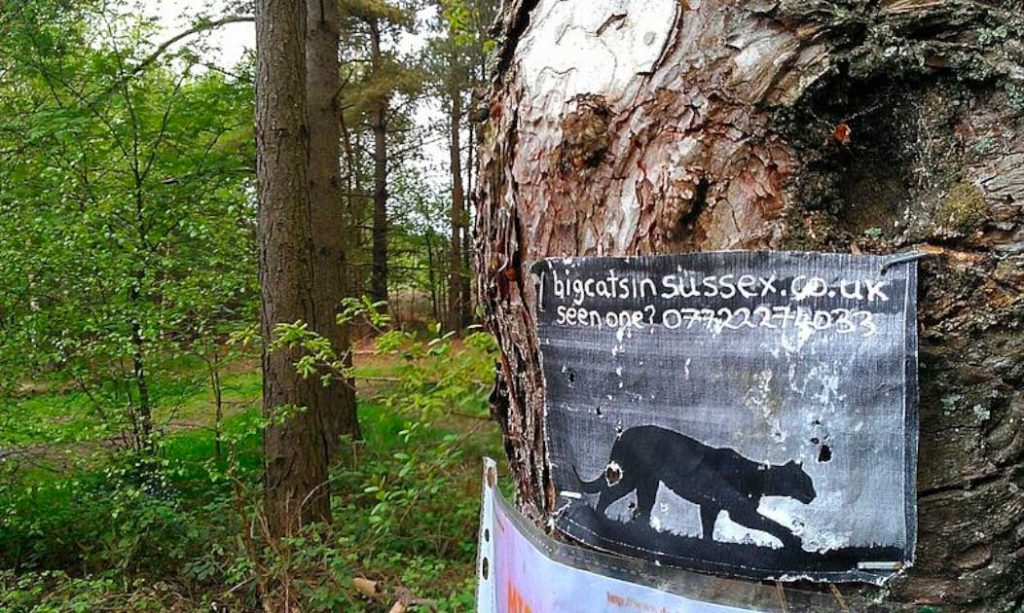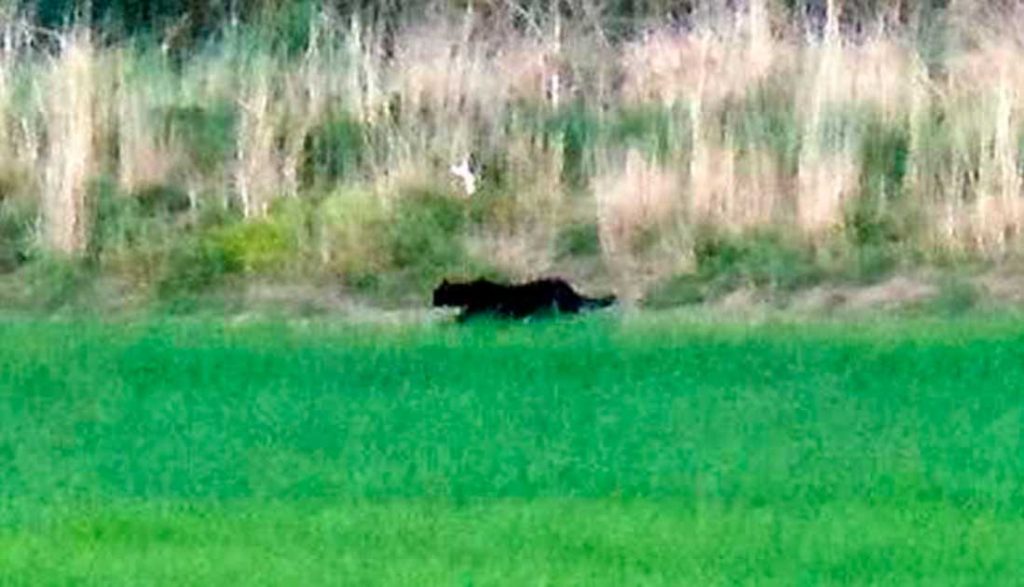Every country has its share of folktales, ghosts and strange creatures, and spooky legends about what lives in the wilds, and the United Kingdom is no exception. However, not all the stories are ancient, and in fact one such story occurred relatively recently. People started reporting strange encounters on one of the wildest tracts of the British landscape: Bodmin Moor, in Cornwall.
The stories tell of a huge cat that lives somewhere on the moor. Sightings have come in, but always from a distance. Sheep were mutilated by some large creature and locals began to mutter about the dangers of travelling on the moor alone, or at night.
Since 1978, there have been over 60 reports relating to the sightings of the phantom black cat. According to the sightings, the large cat-like creature had white-yellow eyes and prominent, sharp teeth. The cat seemed to be a cross between a panther and a domestic cat.
Many people have reported even being chased by the scary cat. There are other people who state that they have seen the beast from a distance and were unable to believe their eyes. There are grainy video footage and photographs of the wild cat. However, as they are not clear, it cannot be proved whether the wild cat was real or not.
What could the Beast be? Could it be something supernatural, haunting the moor? Or could it be an escaped exotic pet (or even, embarrassingly, an overly large pet cat) roaming the wilds of Cornwall?
Stories of the Beast of Bodmin Moor
There are a number of stories and theories relating to the Beast of Bodmin Moor. One of the popular stories is that the big cat might have escaped or been released from a private animal collection or a zoo.

This theory has some support in the local records. There are claims that Mary Chipperfield, who was a British circus entertainer during the 1970s, released 3 pumas into the wild in the year 1978. This would be the exact time that the Beast was first sighted.
Another story that revolves around the big wild cat is that the Dartmouth Zoo in Plymouth, UK, had released a pack of pumas during the 1980s. The animals escaped and chose the most isolated spots to avoid human contact, standard behavior for a wild animal.
This is perhaps more alarming than stories of ghosts. The pumas would adapt nicely to Bodmin Moor, with its large empty areas and grazing sheep. Does Britain therefore support a feral population of pumas?
Investigations
Alarmed by the reports and perceiving them as plausible, in the year 1995, the UK government ordered an official investigation to be carried out in order to determine whether the beast existed in reality. The investigation was conducted by the Ministry of Agriculture, Fisheries, and Food.
The main investigators were Charles Winson and Simon Baker. On the 19th of July, 1995, it was stated that there was no verifiable evidence that could prove the existence of the big cat. However, no evidence was also found that completely discards the existence of the Beast of Bodmin Moor.
Obviously, the locals were unsatisfied with this nebulous conclusion; they knew what they had seen. There had been a number of sightings of the big cat and the people living nearby were afraid for their safety.
It seemed like there was more tangible proof, too. On the 24th of July, 1995, a young boy found a skull of a big cat while walking along the bank of the River Fowey, which runs down through Bodmin Moor to the southern UK coastline.
The skull was 4 inches in length and 7 inches in width. The skull had 3 prominent and sharp canines that indicated that it might be the skull of a leopard. In order to know the truth, the skull was sent to London’s Natural History Museum for verification.
The zoologists and entomologists revealed that it was indeed the skull of a young male leopard. Could this be conclusive evidence of the Beast? Sadly not: it was also found out that the skull had been adjusted after the animal’s death: the leopard had been imported to Britain for leopard skin rug.
Plenty of Other Evidence
Three years later in 1998, video footage was released that clearly showed a big black cat that was nearly three and a half feet long. According to the experts, it is one of the best pieces of evidence that supports the existence of the wild cats in the Bodmin Moor.
Then, in 2012 and at the other end of the United Kingdom, a man named John Robertson discovered the remains of a beast near a popular Scottish beauty spot. According to John, he and his wife, along with their dogs, were walking on a rural path in Cullen, Morayshire. During their walk, they saw the body of the giant cat.

Initially, they found a number of dead birds in one place. When they walked a little further, they came across the giant cat’s dead body. It seemed like the giant cat had feasted on the seagulls and then fell down the cliff, which led to its death.
In July 2013, the Beast of Bodmin Moor was again spotted by Sid Yates, a retired salesman, at 9 in the morning. According to Yates, the wild cat looked like a black Labrador. However, the creature had a longer tail and legs and a flat nose. So, he believed that it was indeed not a dog but a beast.
In July 2015, a mysterious creature was spotted in a house’s garden on the outskirts of Plymouth. The creature was spotted by Carole Desforges, an office worker. She saw the mysterious creature from her living room and tried taking a few pictures through her window. Initially, she thought it to be a fox. However, after seeing the picture she clicked, she wasn’t convinced.
In the year 2016, there have been several reports about the phantom cat roaming in a number of locations in the North Cornwall. The reports of the sightings come from different holidaymakers in the area of Bodmin.
Still Out There?
While there are a number of sightings reported, none of them have been actually confirmed. So, whether the Beast of Bodmin Moor actually existed or not still remains a mystery that is yet to be solved.
There is a possibility that the wild cat could be an extinct species that still survives on the moors of Cornwall. However, there are others who believe that wild cats are just mythical creatures.
Nevertheless, the sightings have been coming in for more than 40 years. It doesn’t seem likely that Bodmin Moor could support a sustainable population of big cats. But that doesn’t mean there aren’t any out there, either.
Top Image: Is the Beast of Bodmin Moor real? Are there big cats in the wild in the UK? Source: Александр Денисюк / Adobe Stock.
By Bipin Dimri